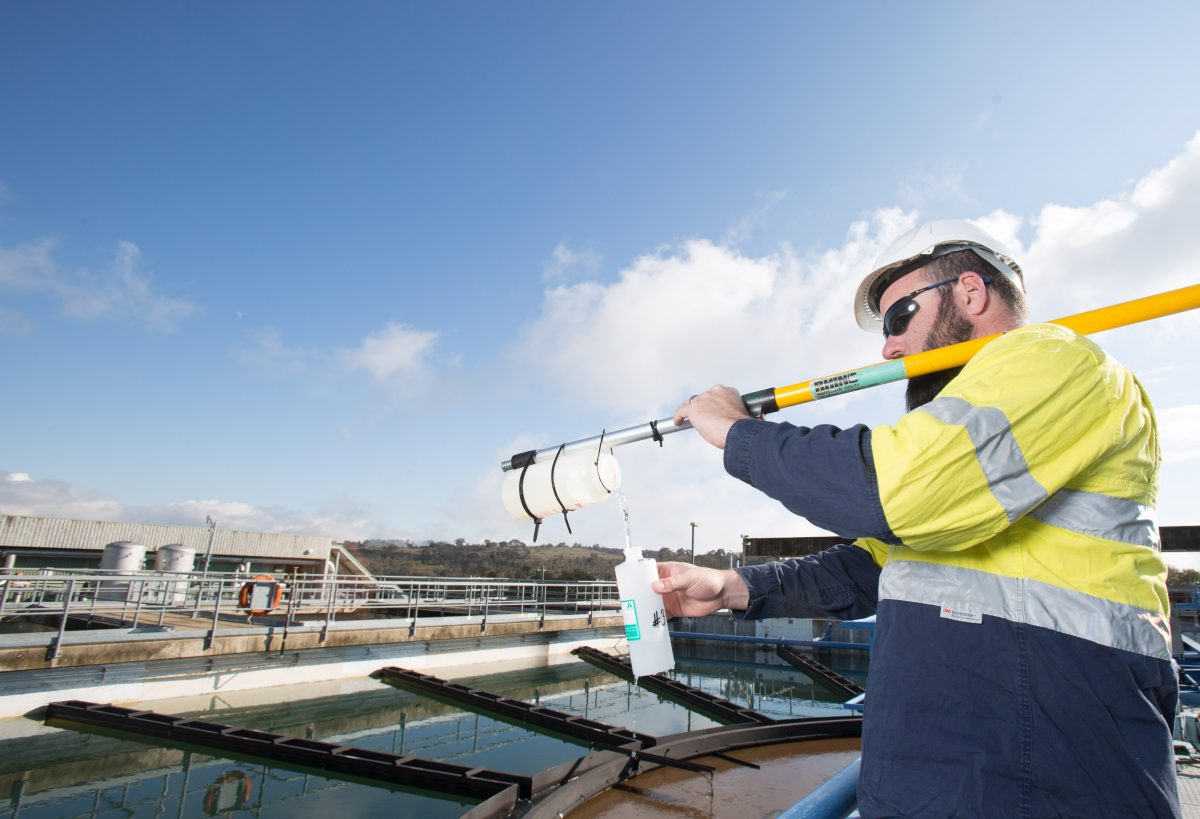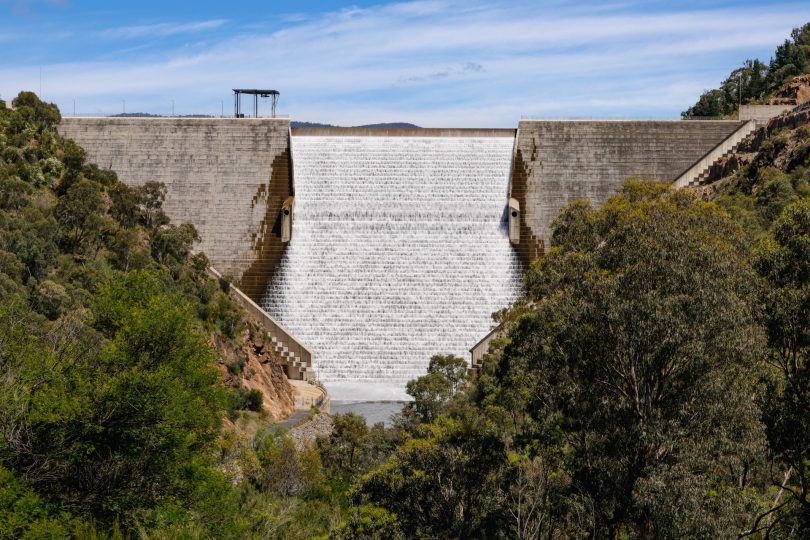
A water ‘clarifier’ at the Googong Water Treatment Plant. Photo: Icon Water.
Canberrans could be drinking treated effluent in years to come, as Icon Water investigates options in a “volatile climate”.
Three years of La Nina might have filled the dams to overflowing, but two droughts in the past 25 years have prompted the government-owned water operator to start looking beyond the ACT’s existing water catchments for our future drinking supply. Especially with predictions our population will hit half a million within the decade.
Beefing up Cotter Dam during the millennium drought might have helped carry Canberra through the subsequent 2016-2020 drought, but CEO Ray Hezkial says Icon Water is now kicking off a range of detailed investigations into more “climate-independent water sources”.
“We’re trying to respond to changes in our climate and growth in our population to make sure we’re not caught out in years to come,” he says.
“We went through probably the worst drought we’ve ever had between 2016 and 2020, and we were very well placed, particularly because of previous investments during the last drought to enlarge the Cotter Dam. But it has prompted us to reassess the climate models we rely on for those sorts of investment decisions.”
Along with recycled water, increased extraction from rivers, searching for groundwater sources and desalination are all on the table.
“The last one would be quite an effort given how far we are from the coast, but in the interest of keeping all the options open, we’ll look at it,” Mr Hezkial says.
The thought of drinking recycled effluent might bring on a bout of nervous gulping, but it’s nothing new. There are basically two categories: one, where it’s used to water sporting fields, gardens and the like, which helps to preserve the supply of drinking water; and two, what Icon Water dubs “purified recycled water”.

Cotter Dam overflowing. But it wasn’t always that way. Photo: Michelle Kroll.
“This is treated effluent which is then released back into dams or water catchments and treated again with the rest of the water to bring it to up to drinking standard.”
Mr Hezkial cites Perth as an Australian case study, where purified recycled water is injected back into the groundwater table and extracted along with the rest, but also says the US, UK and Europe are already doing it too.
“It’s a proven technology, so it’s more to do with our appetite for it. But we’re all downstream of something. Our minds might not go there, but in reality, it already happens.”
Through the ‘Let’s Talk Water and Wastewater’ online forum, Icon Water have already gathered some “mixed” community feedback on the plan.
“The cohort we’ve spoken to have been quite receptive on the whole, but they want to know more about it and what controls will be in place,” Mr Hezkial says.
“We’re keen to have that discussion.”
The investigations will be made in step with the ACT Government’s newly established Office of Water over the next few years. Icon Water won’t be looking to construct anything until “somewhere in the order of 10 to 15 years”.
“These projects are long lived and require a lot of upfront planning, environmental assessment and design.”












